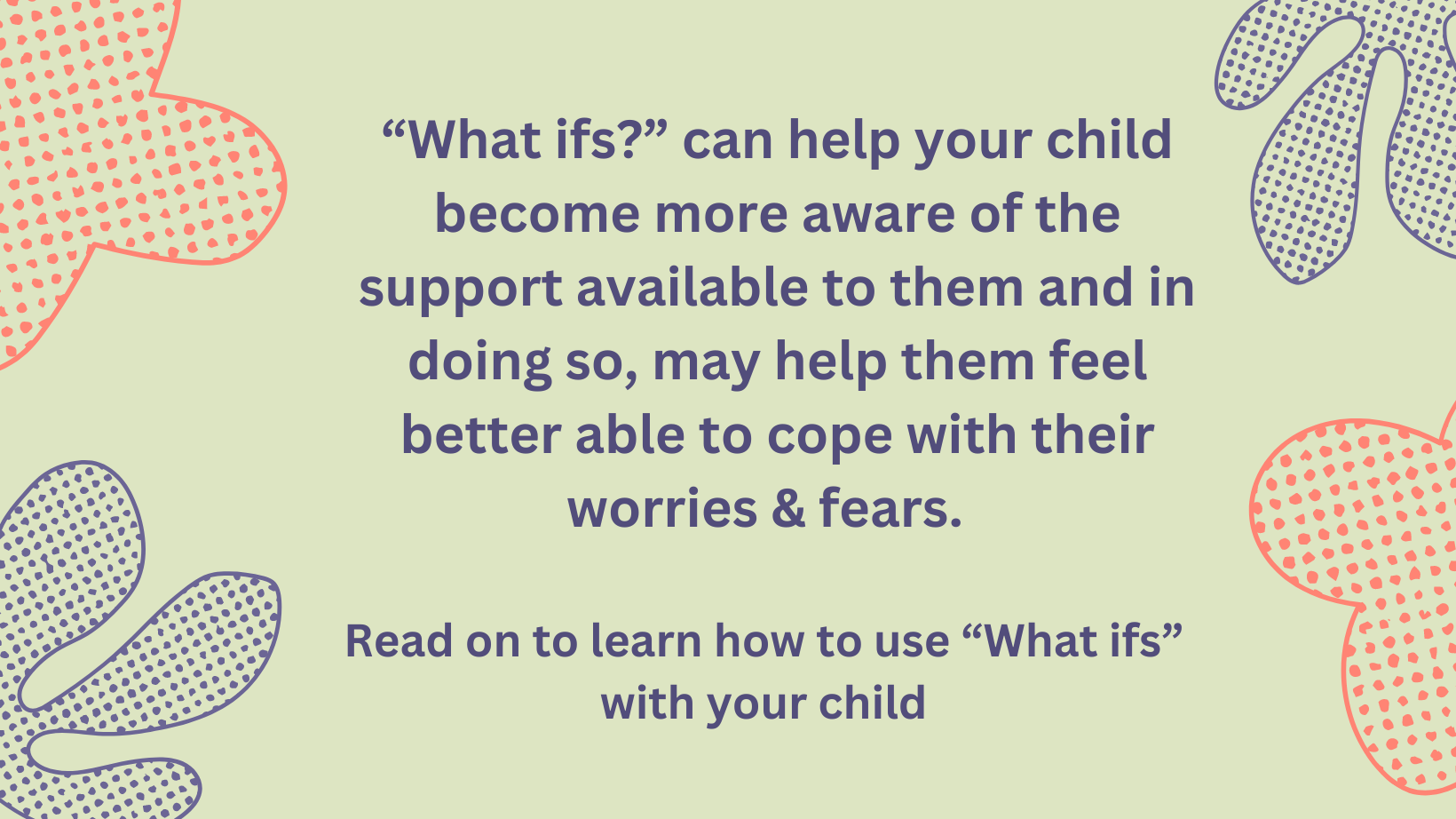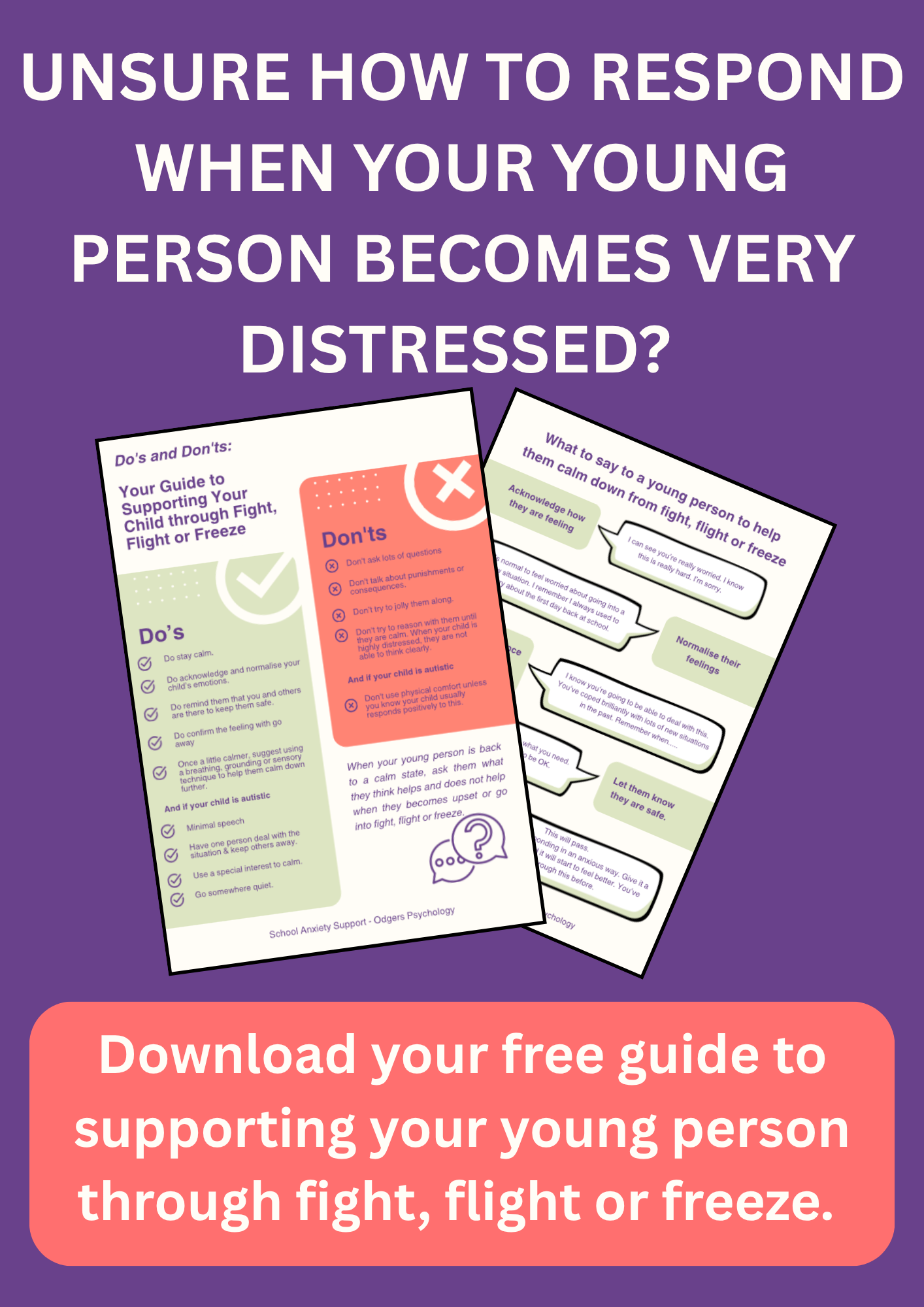Using "What ifs?" to help children with school anxiety feel better able to cope
Sep 04, 2023
One of the reasons why the start of a new school year can be challenging for children with school anxiety because the support they had last year that helped them feel safe (that great relationship with the class teaching assistant, a teacher who understood them inside out, or supportive friendship group) may not be in place on day one of the new school year. That’s not to say that these things won’t develop over time, but realistically, it may take a little while for the new adults and peers in the child’s life to get to know them well and what they need. In addition, children who have moved up from primary to secondary may not yet be aware of the people and systems designed to help them and keep them safe.
So how can we help children and young people who may may feel unsupported and consequently unsafe, at the start of a new academic year?
The power of “What ifs?”.
One of the things we can try is to use “What ifs?”. If you child is able to explain the cause of their anxiety, you can use “What ifs? to help them to identify practical, concrete steps they and others can take to help them cope with the thing they are worried about. For example, if your child indicates they are worried they might get bullied or that they will find the work hard, you could talk through what they could do if that happened using a “What if?”. So “What if you did get bullied? What could you do? Who could you tell? Who else would help you?”.
You can use “What ifs?” even if your child is not able to tell you exactly what they are worried about. Often parents have a pretty good idea what is causing their child so much anxiety and if this is the case, you could make up your own “What ifs?” based on your best guess about what is most likely to be the problem. For example, for a young person moving up to secondary school, you might ask “What could you do if you got lost?”, “What could you do if you wanted to make a friend?”, “What could you do if the canteen is too noisy?”, “What could you do if forgot to write down your homework?”.
The aim of “What ifs?” is to help your child recognise that there are people in school who can help them, to know who those people are and to show them that there would be a way through any difficulties they experience. We know that anxious children tend to underestimate their ability to cope with difficult situations, so it’s very important to try to help them recognise that they are perhaps better able to cope than they think and that there is a support network to help them, even if it doesn’t yet feel like it.
In addition, it’s helpful to communicate with the school at the earliest possible opportunity what your child is worried about. Not only does this mean that the school can start thinking about what support needs to be put in place, but it also means that you can ask staff the same “What if?” questions to make sure you and your child have understood the support systems correctly. For example, “Jay is worried about being bullied. We think that if he was being bullied, the correct thing to do is to tell his head of year. Is that correct? Or should he go to his form tutor first? What else should he do?”
“What ifs” may not work with all children. However, they are worth trying if your child feels unsure about the support available to them in school or appears worried about how to deal with specific situations.
Come Along to My Next Masterclass!
Six Simple Steps to Help Your Child Through Fight, Flight or Freeze - A One Hour Masterclass for Parents of Children Aged 6 to 16 with School Anxiety.
Feel calm, confident and connected when your child panics before school or has an after-school meltdown.
Date: 2nd December 2025.
Time: 8pm to 9pm.


